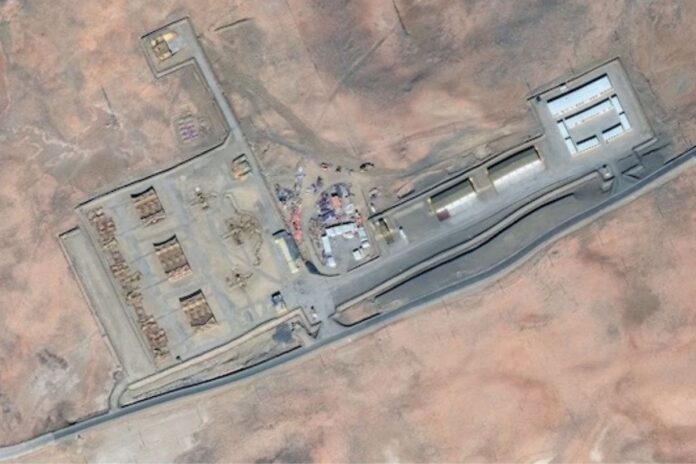India-China Border tensions continue to dominate headlines as recent troop withdrawals have not been accompanied by de-escalation along the Line of Actual Control (LAC). High-resolution satellite imagery reveals significant infrastructure development by China, raising doubts about its commitment to peaceful resolutions.
In the wake of disengagement efforts in Ladakh’s Depsang and Demchok regions earlier this year, the Indian government identified de-escalation as the next critical step. External Affairs Minister Dr. S. Jaishankar emphasized this in Parliament, stating, “The immediate priority was disengagement to prevent further clashes. The next step is addressing troop build-up along the LAC.” However, satellite images sourced by a reputed news channel suggest China’s focus remains on fortifying its positions in disputed zones.
China’s Infrastructure Expansion Along Pangong Lake
Satellite imagery highlights China’s ongoing construction in sensitive areas near Pangong Lake. Military analysts note dual-use infrastructure being developed at key locations such as Sirijap and Khurnak, which are historically significant to India. Defense expert Col. (Retd.) Ajay Raina remarked, “While disengagement has been achieved, China appears to be consolidating its hold on contested regions, raising questions about their intentions.”
Dr. Y. Nithiyanandam from Takshashila Institution analyzed images showing expanded fortifications, drainage networks, and new permanent structures at Sirijap. This development signifies a shift in China’s ground strategy, potentially complicating future negotiations.
New PLA Camps Raise Concerns in Depsang
Further complicating matters, satellite images reveal new People’s Liberation Army (PLA) camps in Depsang. These facilities, located further back from the LAC, suggest strategic repositioning rather than genuine de-escalation. The imagery, dated December 19, shows a facility approximately 3 km north of its previous location, alongside another camp situated 10 km east of earlier PLA positions.
Such movements are indicative of China’s “salami-slicing” strategy, as highlighted by Nature Desai, an Indo-Tibetan border observer. Desai pointed out that areas like the Ote Plains, historically shared by Ladakhi Changpas and Tibetan nomads, have become key in China’s expansionist tactics.
Historical Context: Sirijap and Khurnak Regions
The Sirijap and Khurnak regions, though now heavily contested, have long been part of Ladakh’s historical landscape. During the 1959-1962 conflict, India lost effective control of these areas. The current developments echo past challenges, where buffer zones created during the February 2021 disengagement are now witnessing rapid military advancements.
Strategic Implications for India-China Relations
While diplomatic efforts, including recent meetings between NSA Ajit Doval and Chinese Foreign Minister Wang Yi, aim to foster peace, the ground realities tell a different story. The Ministry of External Affairs reiterated the importance of maintaining tranquillity along the border for broader bilateral ties. However, China’s actions indicate a parallel focus on strengthening its military capabilities.
Dr. Nithiyanandam noted that new roads and helipads being constructed near Pangong Lake enhance mobility but expose vulnerabilities. “The infrastructure is impressive but lacks cover, making it susceptible to airstrikes,” he added. Meanwhile, fortified complexes at Khurnak further suggest China’s preparedness for prolonged engagement.
The Road Ahead: Prioritizing De-Escalation
The lack of visible de-escalation remains a pressing concern for Indian policymakers. Experts argue that while troop withdrawal is a step forward, it must be accompanied by mutual confidence-building measures to ensure long-term peace.
India and China face the dual challenge of managing on-ground realities while fostering diplomatic solutions. With both nations emphasizing economic growth and regional stability, achieving a balanced resolution along the India-China Border is essential for the broader geopolitical landscape.

